Ìyánlá: Great Mother
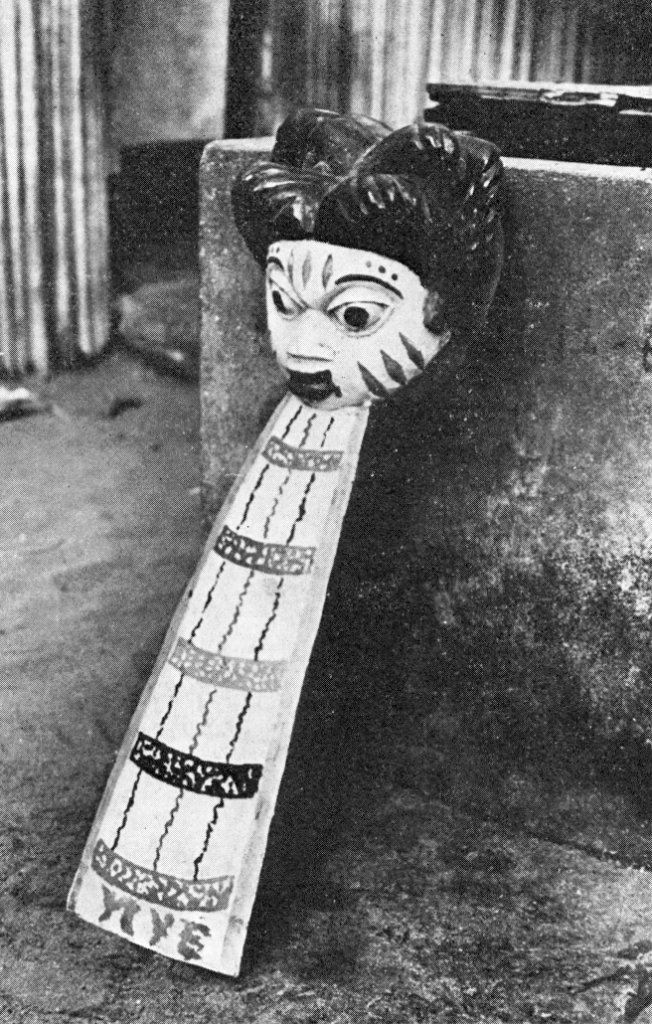
From Ìyá Agón of the Égúngún to Erelú of the Ògboni or Ìyálásè of the Èfè Gèlèdé, and Ìyá Orò of the Orò, women have always played a significant, albeit little, part in Yorùbá cults and traditional organizations. These women, though exclusive, are revered within these institutions and are considered to be “all-knowing” and carry very high importance. Ìyánlá or Great Mother is heralded in Yorùbá culture as the all-powerful mother from whom the human race originated.
In the Yorùbá culture of southwestern Nigeria and the Republic of Benin, women have been traditionally perceived, especially by their male counterparts, to be inscrutable in their ability to keep confidence. This sibylline attribute of women heightens their power and influence in the minds of men. This might come off as contradictory to the stereotypical view of women as the weaker sex and how they are portrayed in different media, both traditional and modern, as well as the patrilineal and patriarchal culture of the Yorùbá. However, a closer look at the culture and traditions of the Yorùbá, especially in mythology and religion, reveals that there is a deferential, almost reverent regard placed upon female adherents.
Expressions such as Abàra Méjì, the dual-formed one, Aláàwò Méj, the one with two skins, and Olójú Méji, the two-faced one, allude to the beliefs of the Yorùbá in the strength and vitality of the feminine vital force, or Àse, its powers of transformation and concealment, its ability to create or destroy, and its perceived ascendancy. These perceptions of women culminate in a depiction of the essence of womanhood as well as the importance of the spiritual and social roles women play in Yorùbá society and is personified in the entity Ìyánlá or Great Mother by the Èfè Gèlèdé cult.
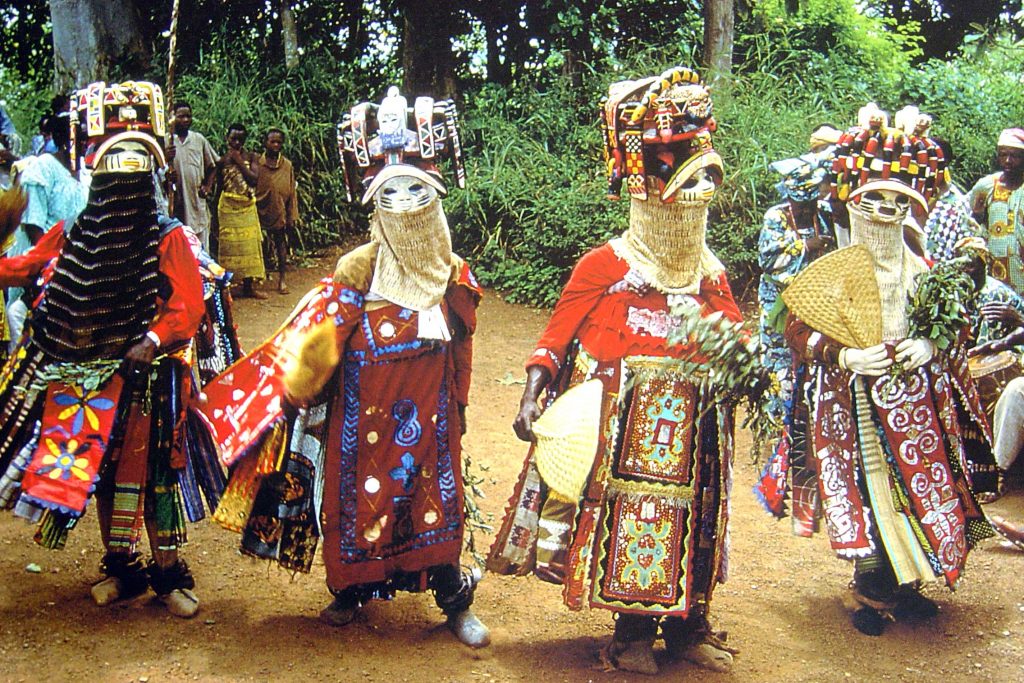
The Èfè Gèlèdé cult celebrates womanhood and its primacy and honours the female deities and ancestors of the Yorùbá people, who are usually referred to as Àwon Ìyáa wa, our Mothers. The origins of the word Gèlèdé also point to the reverence placed upon womanhood and convey the significance of the carefully curated and elaborate performances and spectacles of the cult which pay homage to the innate powers of the female Àse. Gè means to soothe or placate; èlè refers to the female private parts, which are covered or concealed (also alluding to the secrecy associated with the female Àse) and which bestow women with their life-giving abilities; dé means to soften with care and gentleness.
The Èfè Gèlèdé cult is found predominantly among the Kétu, Òhòrì, Ànàgó, Àwórì, Ègbádò, Ìbàràpá, and Sábèé sub-ethnic groups of the Yorùbá. The Èfè Gèlèdé ritual consists of nocturnal (Èfè) and daytime (Gèlèdé) performances involving masquerades with lavish spectacles of carved wooden masks, elaborate and colourful cloth costumes, drumming, singing and dancing. It is during the Èfè part of the ceremony that Ìyánlá, which means Great Mother, the most sacred and inaccessible of the masks of the cult, makes her appearance. She is considered as Òrìsà funfun, a pure deity, and is the very foundation or ìpínlè of the cult and the focus of worship.
Ìyánlá’s entrance is preceded and prepared for by the appearance of other masquerades. She makes her entrance in total darkness, with all lights extinguished because it is taboo for anyone to gaze upon the face of the Great Mother. Her mystery is maintained by the elders of the cult who enclose her in an impenetrable circle as she performs her sacred dance before retreating to the shrine that is her abode at dawn.
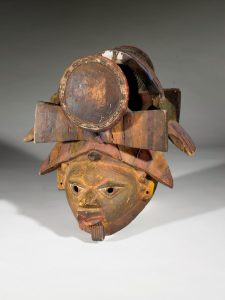
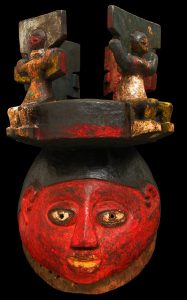
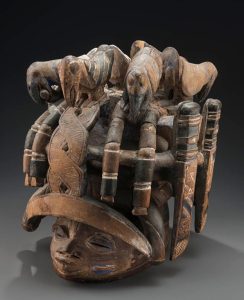
The Ìyánlá mask is distinct from other masks of the Èfè Gèlèdé cult, both in appearance and scale. The mask consists of a hemispherical head to which a long, flat extension that can be as long as two feet is attached at the chin. This extension is described as Ìyánlá’s beard, irùngbòn. Irùngbòn is one of the defining indications of an elder in Yorùbá culture and carries connotations of wisdom and respect. A bearded feminine form carries even more intimation and points to the possession of phenomenal spiritual power. The features of the mask are strong, pronounced, and clearly defined, especially the bulging eyes. The mask sometimes also has a prominent tuft of hair, òsù, at the center of the head, unlike most other Gèlèdé headdresses which usually have large wooden motifs on their crowns. The òsù is yet another depiction of spiritual presence within the headdress.

The making of the Ìyánlá mask is attended by special rituals and proceedings. It has often been suggested that wood from the Ìrókò tree, which is believed to be the dwelling place of the spirits attendant to the Ìyas, Mothers, is preferred. It is the duty of the elders of the cult to procure the wood and to perform prerequisite sacrifices and ceremonies before the work commences. These ceremonies involve the sacrifice of white animals, again alluding to the purity of the Great Mother.
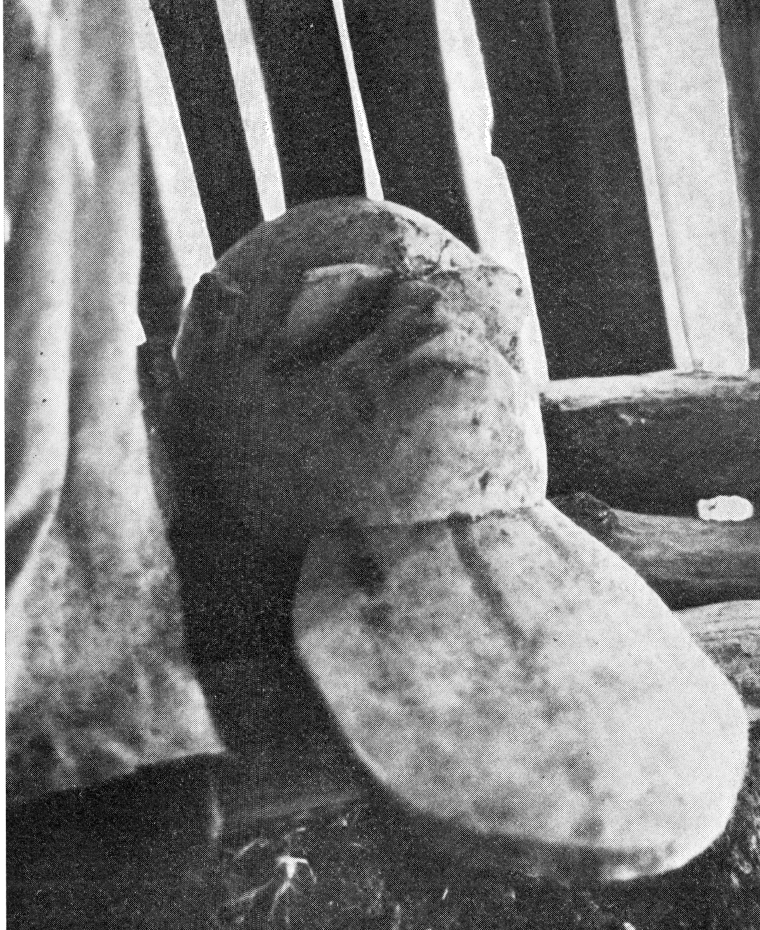
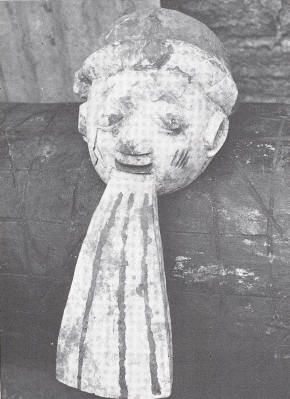
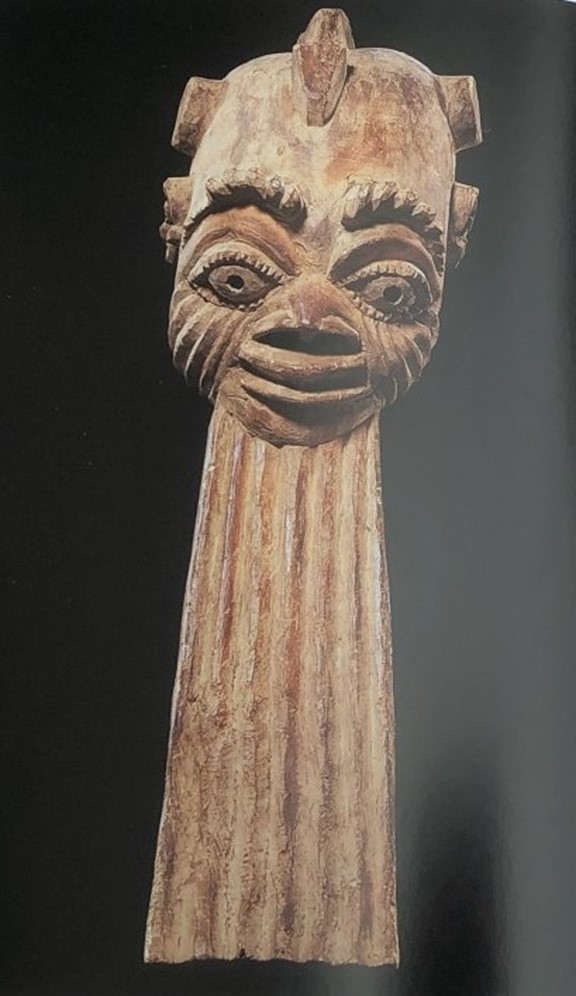
The completion of the carving of the mask also sees the performance of certain rituals. These are believed to imbue the mask with the spirit and essence of Ìyánlá. Certain rules also attend the residence of the mask within the shrine. While other Èfè Gèlèdé masks are openly displayed on the walls of the shrine, the Ìyánlá mask resides behind closed doors in a darkened room, swathed in a bolt of white cloth, the Oloya, only to be beheld by the leader of the cult, the Babaláse, and his assistant.
Sources:
- Drewal, H.T. (1977). Art and the Perception of Women in Yorùbá Culture. Cahiers d’études africaines, vol. 17, no.68, 1977. https://www.persee.fr/doc/cea_0008-0055_1977_num_17_68_2430.
- Drewal, H.J. & Drewal, M.T. (1983) Gẹlẹdẹ: Art and Female Power among the Yoruba. Bloomington: Indiana University Press. ISBN 9780253325693
- Lawal, B. (1996). The Gẹ̀lẹ̀dẹ́ Spectacle: Art, Gender, and Social Harmony in an African Culture. Seattle: University of Washington Press.
- Washington, T.N. (2005). Our Mothers, Our Powers, Our Texts: Manifestations of Àjẹ́ in Africana Literature. Bloomington: Indiana University Press, 16.


